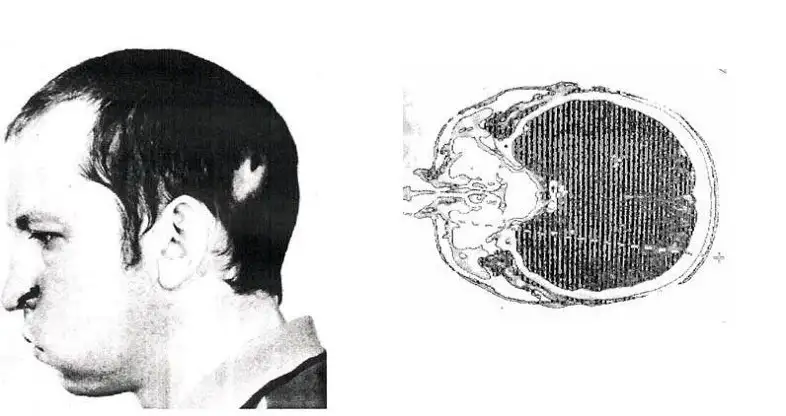 hroughout history, there have been many stories of people that have survived events that assured certain death, such as a bullet to the head. However, we are all unique with special abilities. One such human that had gone beyond any odds of surviving certain death is Anatoli Burgorski, a Russian scientist who had a particle beam go through his head which emitted 300,000 rads.
hroughout history, there have been many stories of people that have survived events that assured certain death, such as a bullet to the head. However, we are all unique with special abilities. One such human that had gone beyond any odds of surviving certain death is Anatoli Burgorski, a Russian scientist who had a particle beam go through his head which emitted 300,000 rads.
In 1978, Anatoli was working at the Institute for High Energy Physics in Protvino. Specialized in physics, his job included the maintenance of a U-70 synchrotron, this was at the time the highest energy accelerator in the USSR. A particle or energy accelerator has the job of accelerating electrons or protons at extremely high speeds in order to produce beams of charged particles that are used for various research. These beams also contain a high concentration of radiation, therefore being very dangerous to any living organism.
A major mistake
On the 13th of July, 1978, just like any other day, Anatoli was going around the particle accelerator to make sure that everything was working as it was supposed to. At a certain point, Anatoli noticed a malfunctioning module from the synchrotron; Anatoli saw that the lights from the synchrotron were off, representing that the accelerator is switched off. Therefore he decided to put his head in the channel to get a better look at the malfunction. However, the accelerator was still on, and in a split second, a high beam went right through his head, emitting over 300,000 rads.
A previous experiment had the lights of the accelerator switched off, and whoever was in charge had forgotten to turn them back on. Anatoli described that he saw the brightest light in his life (a light brighter than one thousand suns) after everything went dark. As mentioned before, 1,000 rads are more than enough to kill a human. After a brief moment, Anatoli got up, fixed the malfunction, and went on with his day, reporting the repaired malfunction but never reporting that he got struck by the beam.
The next day, Anatoli’s face was all swollen, so he decided to present himself to a doctor. It is imperative to understand that this sort of radiation was different from the ones produced by a nuclear bomb, such as the one which struck Hiroshima or the Nuclear outbreak from Chornobyl. This radiation was ionized, in other words, very concentrated in a small beam, therefore this only affected the area in the body (in this case head) where the beam struck. Even so, with what experts assumed to be at least 250,000 ionizing radiation, Anatoli shouldn’t have survived that accident.
Extremely lucky
From the analyses made by the doctor, the beam had entered through the back of his head and exited through his nose. It burned a hole through his brain, destroying tissues and nerves and leaving one side of his face paralyzed; his vital organs, such as bone marrow and the gastrointestinal tract, were spared. Amazingly enough, the only thing that Anatoli lost apart from any feeling in his left cheek was the hearing in his left ear. Due to this accident, he was given 18 months off from work to recover.

During his recovery, Anatoli started having seizures more and more frequently, which made him think that a tumor may be developing in his brain due to the radiation. However, every medical check assured him that there was no such risk. Anatoli kept visiting a specialized clinic in Moscow at least four times a year to make sure that no further problems were developing.
After 18 months of recovery, Anatoli returned to his work, completing his Ph.D. in physics, and even held his own experiment at the U-70 Proton Synchroton where the accident happened. Due to the policy of the Soviet Union, this story remained a secret until the collapse of the Soviet Union. It was actually Anatoli that brought light to the story. Anatoli Burgorski did not only survive many years after the incident (reaching 78 this year) but he also outlived the synchrotron that helped him become a popular Physicist in Russia.
Avid Writer with invaluable knowledge of Humanity!
Upcoming historian with over 30 million views online.
“You make your own life.”





